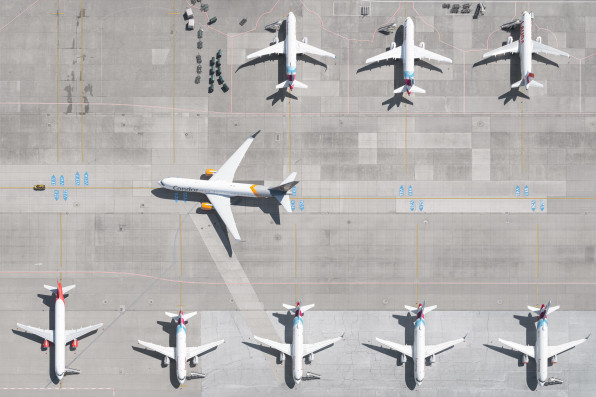Airports are beginning to bustle again, but this time last year they were deserted. And that gave one photographer a rare opportunity to capture the beauty in their stasis.
German photographer Tom Hegen wanted to convey his personal quarantine experience, and after hearing how airports were closed and planes grounded across Germany, he decided to focus his project there. His aerial images, which capture runways dotted with grounded aircraft, striped with colorful lines, and punctuated with luggage carriers at a standstill, are a graphic ode to travel during a time when no one was going anywhere. These photos are now compiled in a new book aptly titled Airports.

It’s easy to look at the drab gray cement of an airport at eye level and see the space purely as a means to getting somewhere else. But Hegen’s photographs make airport runways a visual destination. Shot from above, the airplanes almost seem like miniatures, perfectly placed in symmetric and correlating patterns and surrounded by brightly colored accent lines. But it’s also a reminder that the space is a feat of architecture and engineering; its layout is a beautiful and precise way to get all of us from point A to point B safely.
It should also come as no surprise that Hegen was trained as a graphic designer, so finding a graphic composition in the everyday is second nature for him. He looked for clean compositions that emphasized geometric shapes, pattern, and lines. “The concrete ground resembles the stage for all the elements and colors appearing in the scenery,” says Hegen. “[It’s] like a miniature world.”


 Fastcompany.com adheres to NewsGuard’s nine standards of credibility and transparency.
Fastcompany.com adheres to NewsGuard’s nine standards of credibility and transparency.